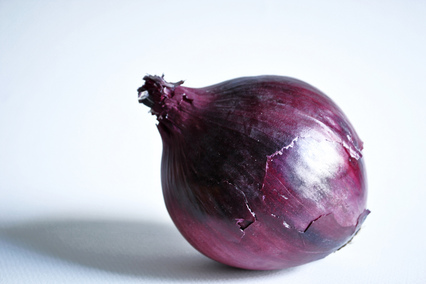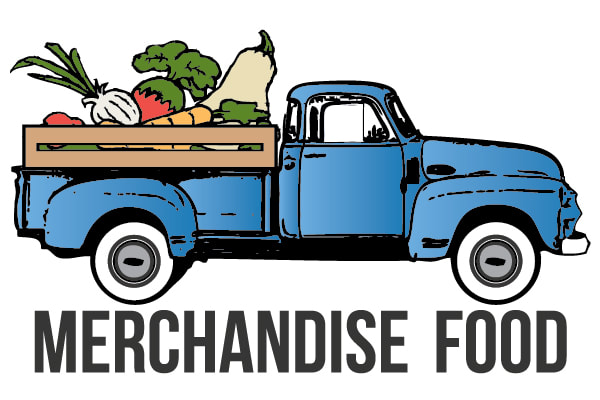
While many people might make a claim to certain industry innovations, I had the pleasure of knowing, albeit not very well, as a young man a very interesting character from the history books of Produce Merchandising. He brought a number of unique perspectives to the onion and lettuce business of his time which earned him a healthy profit. Albert Marble, from the famous onion growing mucklands in Elba, NY attended my church. He was a natural businessman and he loved to play the violin. My friend Bill Shelhorse, Mr. Marble's next door neighbor, wrote a paper sharing just a small piece of his story which I thought you might find interesting below.
ALBERT MARBLE: AN ENTREPRENEUR
Written by: Bill Shelhorse
Albert Marble was born in 1903 at Alabama Center. NY. He was the son of Lioneal and Netty (nee Wood) Marble of Basom, NY, whose profession was farming. Mr. Albert Marble has worked at three major professions in his lifetime teaching, farming, and onion seed growing. As a teacher, he taught in two school districts for three years. The first school he taught in was District # 7 Elba, NY. It was a one room schoolhouse. His duties besides teaching were janitor, maintaining the wood stove, and snow removal. The toilet facility was an outhouse. District # 8 was built in 1923, had two rooms, a furnace, a slate blackboard, and indoor plumbing. Mildred Rowcliff (nee Shepard) was one of his sixth grade students in District # 8‘ Mrs. Rowcliff stated that he was a wonderful teacher, a good disciplinarian and everyone loved him. I am a teacher and he helped influence my career (Rowcliff, 1989).
In 1926, Mr. Marble saw an opportunity to make a profit by buying fields of lettuce that had been picked by the growers. The growers would not pick the heads that had not filled out. They Would normally plow under those heads. Mr. Marble would buy the fields and pick the light heads, take them to market, and sell them for less. The net profit after expenses would be between $10 to $15 (Marble, 1989).
He also saw a real waste when the onion growers would throw away onions which had lost their yellow skins (skinners) during processing. Mr. Marble had an idea that he could sell these skinners to food processing plants and make a profit. He went around to the growers and purchased all the skinners he could. He had several carloads of them in storage, which made the storage companies nervous because they knew that these onions were thrown away. Mr. Marble went to the canneries and presented them a bag of Skinners to use in their business. They said they could not use them because they had no skins. Mr. Marble asked, what do you do with the skins? They replied, we peel them off and throw them away.
Mr. Marble explained that they could eliminate the peeling step by buying his onions. They did and eventually his skinners brought more per pound than those with skins. In 1935, Mr. Marble, began to experiment with growing onion seed. Up to this time most seed came from west of the Mississippi River. He first grew his seed on the back lot of 27 West Ave. Elba, NY. Onions were always susceptible toblight, (a disease). He found that growing on a hill where the plants could get more air, helped to control blight. He also found that by growing in rows four feet wide the plants got even more air and less blight problems. He effectively experimented with fungicides which controlled blight.
Written by: Bill Shelhorse
Albert Marble was born in 1903 at Alabama Center. NY. He was the son of Lioneal and Netty (nee Wood) Marble of Basom, NY, whose profession was farming. Mr. Albert Marble has worked at three major professions in his lifetime teaching, farming, and onion seed growing. As a teacher, he taught in two school districts for three years. The first school he taught in was District # 7 Elba, NY. It was a one room schoolhouse. His duties besides teaching were janitor, maintaining the wood stove, and snow removal. The toilet facility was an outhouse. District # 8 was built in 1923, had two rooms, a furnace, a slate blackboard, and indoor plumbing. Mildred Rowcliff (nee Shepard) was one of his sixth grade students in District # 8‘ Mrs. Rowcliff stated that he was a wonderful teacher, a good disciplinarian and everyone loved him. I am a teacher and he helped influence my career (Rowcliff, 1989).
In 1926, Mr. Marble saw an opportunity to make a profit by buying fields of lettuce that had been picked by the growers. The growers would not pick the heads that had not filled out. They Would normally plow under those heads. Mr. Marble would buy the fields and pick the light heads, take them to market, and sell them for less. The net profit after expenses would be between $10 to $15 (Marble, 1989).
He also saw a real waste when the onion growers would throw away onions which had lost their yellow skins (skinners) during processing. Mr. Marble had an idea that he could sell these skinners to food processing plants and make a profit. He went around to the growers and purchased all the skinners he could. He had several carloads of them in storage, which made the storage companies nervous because they knew that these onions were thrown away. Mr. Marble went to the canneries and presented them a bag of Skinners to use in their business. They said they could not use them because they had no skins. Mr. Marble asked, what do you do with the skins? They replied, we peel them off and throw them away.
Mr. Marble explained that they could eliminate the peeling step by buying his onions. They did and eventually his skinners brought more per pound than those with skins. In 1935, Mr. Marble, began to experiment with growing onion seed. Up to this time most seed came from west of the Mississippi River. He first grew his seed on the back lot of 27 West Ave. Elba, NY. Onions were always susceptible toblight, (a disease). He found that growing on a hill where the plants could get more air, helped to control blight. He also found that by growing in rows four feet wide the plants got even more air and less blight problems. He effectively experimented with fungicides which controlled blight.


 RSS Feed
RSS Feed
